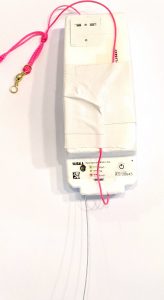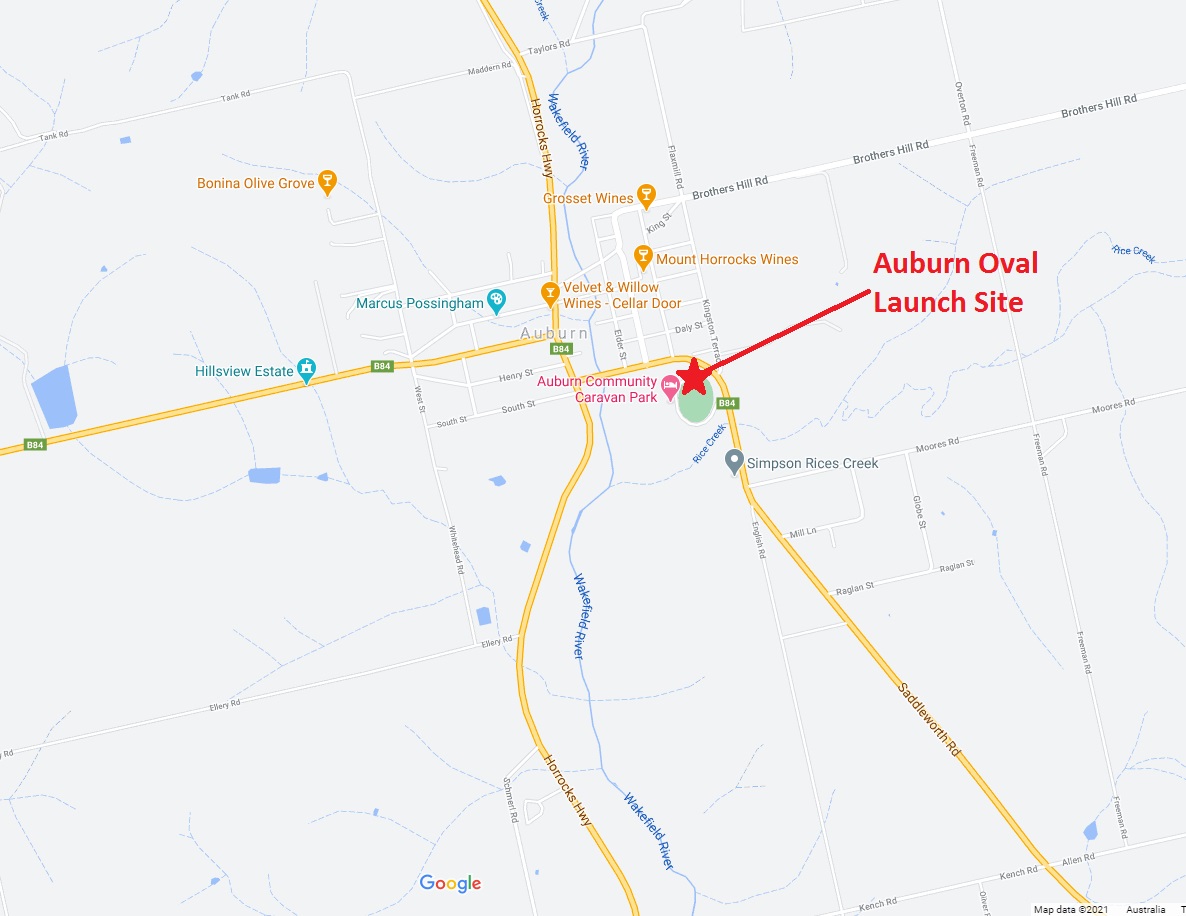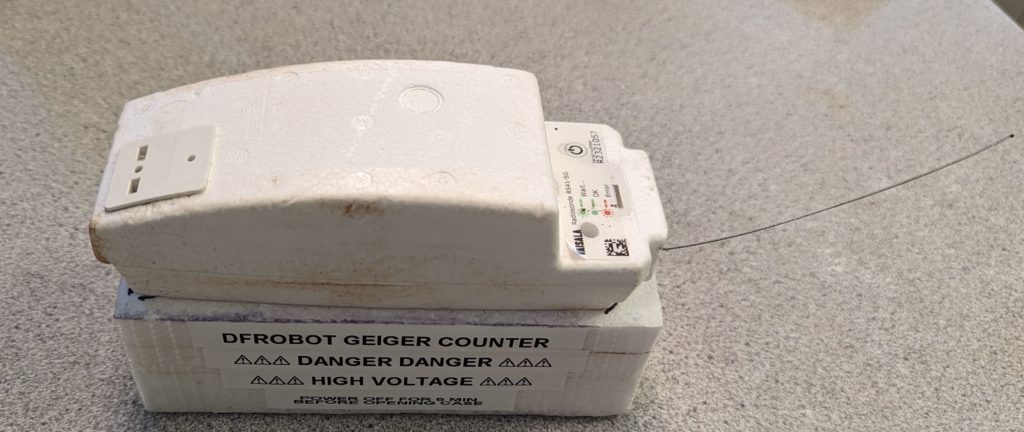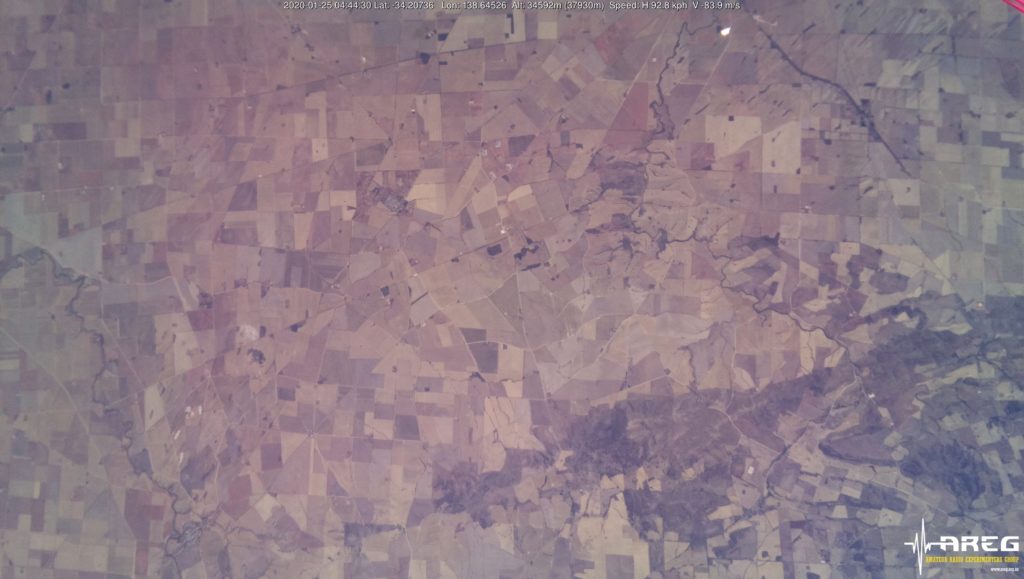UPDATE: Thanks to all that helped out with this launch, both at the launch site, and receiving telemetry! It was great to see such a large turnout of receivers on the tracker. Unfortunately the live SSDV imagery website failed just before the launch, but we’ll post some photos from the flight in an upcoming blog post.
AREG is pleased to once again be involved with the International Space University’s Southern Hemisphere Space Studies Program (SHSSP) hosted by the University of South Australia. This year one balloon is being launched from the Auburn Community Oval as part of the program.
Launch is now planned to occur around 11:00-11:30 AM on Sunday the 29th of January. Launch crews will be on-site from approximately 10:00 AM.
All amateurs across the state are invited to participate in the flight through collecting the 4FSK telemetry. All you need is an SSB receiver on 70cm, and an interface to your computer. The rest is software!
Tracking of the flight will be via the SondeHub-Amateur tracker, available by clicking this link. There will also be live imagery transmitted throughout the flight (refer further below for decoding details), available here.
A live data dashboard showing telemetry from the various payloads will be available during the flight at this link.
Primary Telemetry – 434.200 MHz
 The primary tracking telemetry will be transmitted on 434.200 MHz using the Horus Binary 4FSK data mode. Amateurs in the Adelaide and Central SA region are also encouraged to get involved with the flight through receiving and uploading flight telemetry from our 70cm band tracking beacons. Every piece of telemetry data is valuable to the flight tracking and recovery teams so if you can help join the distributed receiver network to collect that data you will be making an important contribution to the project!
The primary tracking telemetry will be transmitted on 434.200 MHz using the Horus Binary 4FSK data mode. Amateurs in the Adelaide and Central SA region are also encouraged to get involved with the flight through receiving and uploading flight telemetry from our 70cm band tracking beacons. Every piece of telemetry data is valuable to the flight tracking and recovery teams so if you can help join the distributed receiver network to collect that data you will be making an important contribution to the project!
If you try receiving the telemetry from this flight, you’ll need a SSB-capable 70cm receiver (or a SDR), and the Horus-GUI telemetry decoder software. A brief guide on setting this up is available here: https://github.com/projecthorus/horusdemodlib/wiki/1.1-Horus-GUI-Reception-Guide-(Windows-Linux-OSX)
Listeners that already have Horus-GUI installed are encouraged to update to the latest version, which is available at this link.
Note that you will need to use a USB ‘dial’ frequency of 434.199 MHz for the 4FSK signal to be centred in your receiver passband and hence be decodable.
Radiation Sensor Payload – 434.210 MHz
A radiation sensor payload, using a Geiger-Muller Tube, will also be launched on this flight. This will be transmitting on 434.210 MHz, also using the Horus Binary 4FSK data mode. The aim of this payload is to investigate the variation in radiation exposure throughout the flight.
This telemetry can be decoded using the same Horus-GUI software as the primary telemetry. Note that you will need to use a USB ‘dial’ frequency of 434.209 MHz for the 4FSK signal to be centred in your receiver passband and hence be decodable.
Tracking Details – Downward-Facing Imagery – 441.200 MHz
Imagery on this flight will be transmitted via the Wenet downlink system, which uses 115kbit/s Frequency-Shift-Keying to send HD snapshots. Reception of the Wenet imagery requires a Linux computer, a RTLSDR, and a 70cm antenna with some gain (a 5-element Yagi is usually enough).
This flight will be flying a downward-facing camera. The imagery captured from this payload will be used by SHSSP participants to pan-sharpen lower resolution satellite imagery.
A guide on how to get set up to receive the Wenet signal is available here: https://github.com/projecthorus/wenet/wiki/Wenet-RX-Instructions-(Linux-using-Docker)
Please note the transmit frequency of 441.2 MHz, which may require listeners to re-configure their Wenet setup. Listeners who are already setup to receive Wenet should consider updating their decoding software to the latest version (December 2022), with update instructions available here.
During the flight, the live imagery will be available at this link: http://ssdv.habhub.org/
Tracking Details – Outward-Facing Imagery – 443.500 MHz
There will be a second imagery payload running on 443.500 MHz. This is a re-flight of our usual imagery payload, with the cameras pointing towards the horizon.
If you have the capability of running 2 receivers, please consider receiving this payload as well, but please prioritise receiving the payload on 441.200 MHz.




